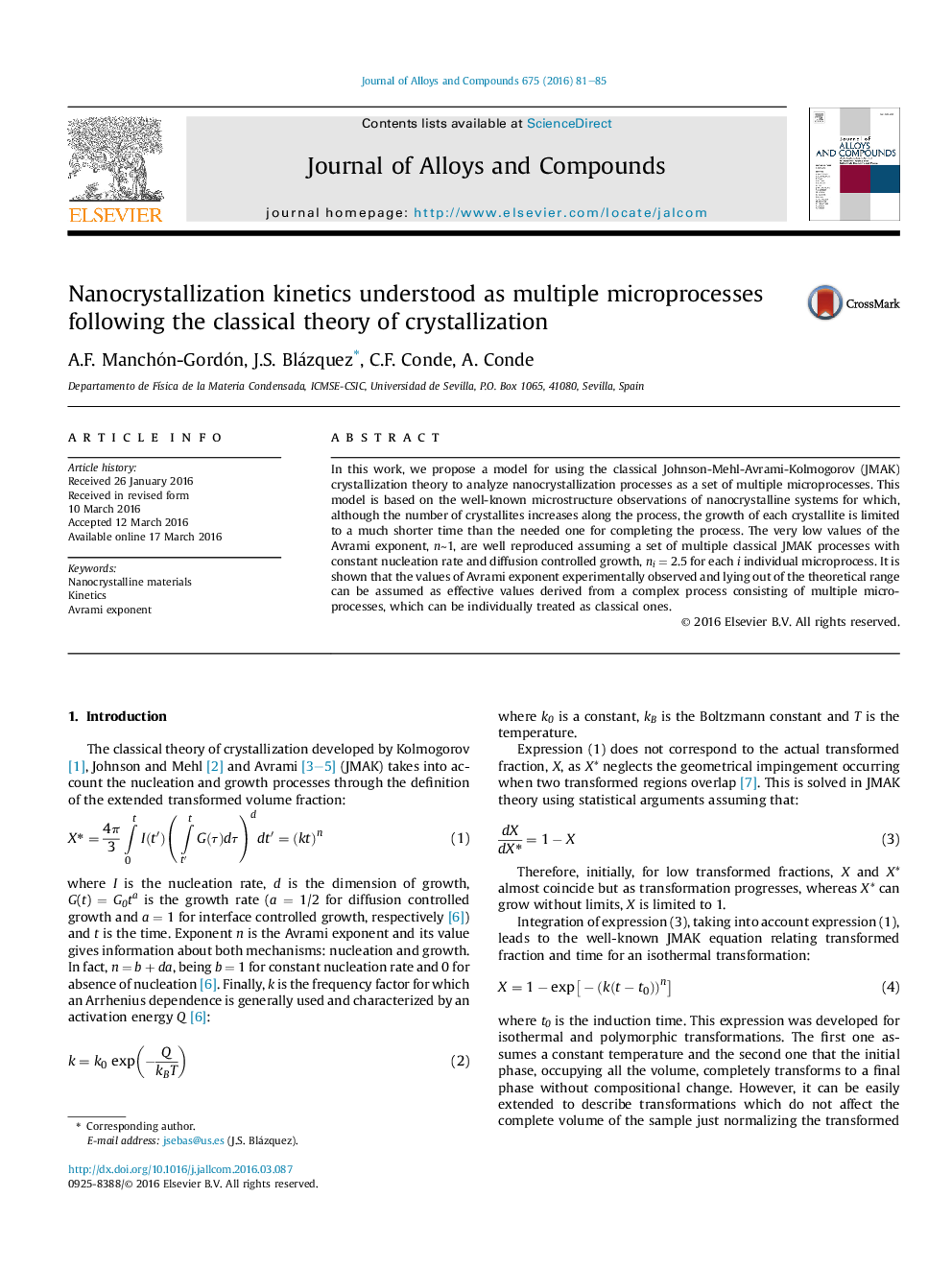| کد مقاله | کد نشریه | سال انتشار | مقاله انگلیسی | نسخه تمام متن |
|---|---|---|---|---|
| 1605714 | 1516218 | 2016 | 5 صفحه PDF | دانلود رایگان |
• A set of multiple classical processes explains the low Avrami exponents.
• Each process corresponds to a set of crystallites growing to its saturation size.
• Model inspired in the nanocrystalline microstructure.
In this work, we propose a model for using the classical Johnson-Mehl-Avrami-Kolmogorov (JMAK) crystallization theory to analyze nanocrystallization processes as a set of multiple microprocesses. This model is based on the well-known microstructure observations of nanocrystalline systems for which, although the number of crystallites increases along the process, the growth of each crystallite is limited to a much shorter time than the needed one for completing the process. The very low values of the Avrami exponent, n∼1, are well reproduced assuming a set of multiple classical JMAK processes with constant nucleation rate and diffusion controlled growth, ni = 2.5 for each i individual microprocess. It is shown that the values of Avrami exponent experimentally observed and lying out of the theoretical range can be assumed as effective values derived from a complex process consisting of multiple microprocesses, which can be individually treated as classical ones.
Journal: Journal of Alloys and Compounds - Volume 675, 5 August 2016, Pages 81–85
